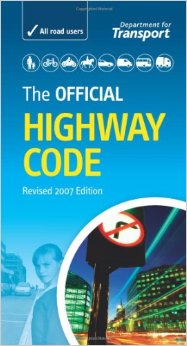
Think of the Highway Code and you'll likely imagine a small yet complex booklet that drives fear into all new motorists minds.
First introduced back in 1931, The Highway Code was published in order to help improve and promote safety on the roads. Since then, it's been the backbone of learner driver teaching materials, and is used extensively throughout the learning process, as well as the run-up to the dreaded driving test. Each year, around a million of them are sold in the UK.
The booklet is pretty accessible for all abilities - it has been produced so that it is easily understandable, even though you'll need time and dedication to learn all the legal requirements, laws and guidance that is contained in the code.

Contained in the Highway Code are guidance and information regarding road signs, markings on the road, first aid and penalties. The code doesn't just contain information for drivers, however. It's also a point of reference for anyone who uses the road, including cyclists, motorbike riders, pedestrians and wheelchair/mobility scooter users. It even contains information and guidance for those using the roads on animals, such as horses.
The overall aim of the code is to outline what can, and what can't be done on public roads and motorways in the UK. Any rules that are accompanied with the words "must" or "must not" are statutory requirements set down in law, and must be adhered to. Failing to adhere to a statutory rule means that a police officer can be given a caution (at the least), some licence points, a fine, a driving ban or even imprisoned for some severe cases of dangerous or reckless driving.
A section from the 1988 Road Traffic Act mentions what happens when a road user does not comply with The Highway Code:
A failure on the part of a person to observe a provision of The Highway Code shall not of itself render that person liable to criminal proceedings of any kind but any such failure may in any proceedings (whether civil or criminal, and including proceedings for an offence under the Traffic Acts, the [1981 c. 14.] Public Passenger Vehicles Act 1981 or sections 18 to 23 of the [1985 c. 67.] Transport Act 1985) be relied upon by any party to the proceedings as tending to establish or negative any liability which is in question in those proceedings.
The code also contains many rules that are deemed 'advisory'. These rules are accompanied with the words "should/should not" or "do/do not".
The body behind the Highway Code are the Department for Transport and the Driver and Vehicle Standards Agency (DVSA). The DVSA are responsible for promoting the safe use of roads across Britain, and they are also the organisation who carry out the much-feared practical and theory tests that strike panic into the hearts of those who are preparing for it.
The Highway Code is also available online - you can browse most of the official guidance and rules on the Gov.uk website at Highway Code.
